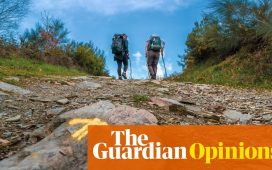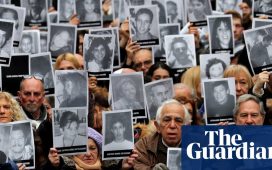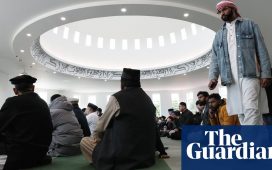The patient, who I’ll call RL, was homeless and came into Bellevue’s psychiatric ward experiencing hallucinations. His struggle with severe mental illness was similar to many of the other homeless people I saw on my daily commute through New York.
It was July 2020, and I had just started my year as a chaplain-in-training on the ward. Already, I was struggling to help him. He couldn’t hold a conversation, slept most of the day, and whenever awake, would stare blankly at the television in the activity room and talk to himself. Yet occasionally, when I spoke to him, his eyes would light up and I’d catch him in a moment of clarity. We’d talk for a minute about barbecue or baseball, two subjects I knew he liked, before the light clicked off and he walked away.
RL was a typical patient at Bellevue. Since 1736, the New York hospital has cared for the city’s poorest residents – people living on the streets; those in the grips of a mental health crisis, addiction and withdrawal; families who lack insurance and choices; immigrants without papers and resources for preventative care. An entire floor treats detainees from Rikers Island jail.
In a city of exorbitant wealth, the hospital has long stood as an open door to the outcast and marginalized – people like RL.
One day I arrived on the floor to find the fog had cleared from RL’s mind. We drank coffee and he shared with me stories about his home town, his family, and where he planned on finding a job. Like with other patients, the staff and I clapped and congratulated him upon his recovery and discharge.
Two weeks later, as I walked through Penn Station on my way home, there he was. His clothes were rumpled and dirty and he was rummaging through a garbage can for food. He didn’t recognize me at all.
The heartbreak upon seeing him was born of sheer helplessness – a feeling I would have to contend with many times during my year in training, and one that was compounded by the pandemic. Between Covid and the mere terminability of life, my fellow colleagues and I were called to attend many deaths over the year, some of which will stay with me forever.
There was the construction worker who locked eyes just as the anesthesia put him under and he was intubated, never to awake. The 40-year-old father who sustained a fatal brain injury, whose family begged for a miracle then pondered: “Should we end life support? What would God want us to do?”
On Christmas night I attended four deaths. One of them was a little boy who suffered an aneurysm after opening his presents. I had pleaded to God for mercy as doctors performed chest compressions. Later, after he died, I stood with his parents as we prayed over the body, resting my hand gently on his forehead, as I would my own daughter the same age.
But perhaps ironically, our most humbling and difficult work had little to do with death. It involved helping our patients – those convicted of crime; diagnosed with a psychosis; grappling from diabetes; rendered without home and those declared “alien” by law –– feel fully alive and accepted in the world, demonstrating that each of them is worthy and their dignity inherent, a concept as radical as it is hopeful. For this reason, the practice of spiritual care is one of the greatest acts of social justice I’ve ever been part of.
Our group of six chaplain residents was wildly diverse, representing the full spectrum of our city. We were Black, white, Latino, gay, straight and trans. Three of us were immigrants from Colombia, Nigeria and Tobago.
Religiously, we all identified as Christian. But in a city hospital where we encountered Muslims, Buddhists, Hindus, atheists and a wide swath of “nones”, espousing our personal religious views was wholly discouraged. Proselytizing was absolutely forbidden.
We were trained, like most chaplains today, in clinical pastoral education, or CPE, a curriculum that draws from psychology to teach empathy and help people find meaning in the face of illness, death or crisis. Whether that’s achieved through God or by other means (art, music, listening to the birds sing), is up to the patient.
Our office was stocked with Jewish prayer books, Qur’ans and Bibles, Buddhist texts and Pema Chödrön books that someone had donated, all of which we’d deliver when asked.
When a Muslim newborn died in the pediatric ICU one morning, I’d recited the death prayer, or Istirja, at the request of the parents. All of us had been asked at some point to recite ritual prayers for our Jewish, Buddhist and Hindu patients. One of my colleagues would whip out his phone and play Hindu mantras or Entre Tus Manos on YouTube, other times it would be bluegrass and R&B – whatever helped patients feel a connection to their spiritual traditions, memories and give them a sense of comfort.
Two days a week, we met for process groups with our supervisor, Rabbi Mollie Cantor, who had served as a pediatric chaplain for much of her career. We would read aloud scripts from our recent visits and offer feedback.
One goal was to help us identify transference and countertransference – projecting our own deeply held emotions on to our patients – and thus, examine our own baggage. The sad and lonely woman on the 15th floor who cried for half an hour is not my mother or my dear Aunt Lucy, just like the little boy who died on Christmas was not my own child, despite the intense emotional connections. The goal is to acknowledge whatever feelings and assumptions arose and move on with our care, but this process takes practice and a willingness to remain vulnerable.
Most of us found it hard to submit to this painful work of emotional processing. Long-held religious beliefs got called into question. Old ghosts, past traumas and slithery, implicit biases got exposed. As the only straight white male in the program, the scrutiny I encountered was humbling.
Other days, a comment about sins or demons from one of my peers, a conservative evangelical pastor, would trigger something deep within and cause me to break out in sweats. Standoffs and open arguments with our supervisor were common. Yet we all worked with the understanding that it came from a place of love, this blunt-edge process of mining the darkest and ugliest parts of ourselves so on the other three days of the week, we could sit without fear or judgment with the darkest and ugliest parts of others.
Early on, it was called to my attention that I had a savior complex. At first I’d bristled at the charge, but after some exploring I realized it needed addressing in order to see my patients clearly.
Growing up, I’d spent years listening to people share heartbreaking testimonies about their slide toward rock bottom. They often framed their stories around a hard binary of “saved” or “unsaved”, in or out. This vision of theology emphasized individual salvation and was exclusive in who it allowed “in”. And it seemed to ignore the bulk of the Gospels, particularly Jesus’s radically inclusive and communal ministry of compassion toward the poor and the otherwise unlovable.
Conflicted, I drifted outside my faith and community for years as a kind of spiritual refugee. Yet, I clung to this notion of salvation, that when expanded beyond the narrow realm of the by and by, could speak to the loneliness and alienation that so many people felt, including myself.
For much of the year at Bellevue, I worked in the emergency room, where I encountered an endless procession of men and women battling addiction. I was drawn to these folks, probably for the reasons stated above, but also due to my own experiences with drugs and alcohol, which led to some countertransference in these visits.
In my first months, I’d pounce on any indication that someone wanted to change and soon tasted the power of the reformer, the zeal of the crusader. One patient, a middle-aged African American man, had a long history of substance use, homelessness and incarceration. I’d ended the visit with an appeal for him to “forgive” himself, to “like” himself and realize his full potential.
Afterward, I presented the script of this visit to the group. When I finished reading, one of my other supervisors smiled and asked: “Tell me, how long was that visit?”
“I don’t know, 20 minutes maybe.”
“Wow”, he said. “Here’s this guy with a lifetime of trauma and addiction, not to mention abandonment issues with his mom. He then tells you about living on the streets and spending years in prison, and here you go and turn his life around in a single, 20-minute conversation. Congratulations,” he said, a wry grin on his face. “You’re like the greatest chaplain in the world.”
The lesson, I slowly learned, was that we cannot change people, nor is it within our role as chaplains to try. Our role wasn’t to transform, but to meet the addiction and despair with a presence that is neither anxious nor judgmental, a presence that can accompany a person to the places where no one else wants to go, whether they’re sober, high or in the jaws of withdrawal. To meet their humanity with our own, their vulnerability with ours.
Mollie liked to call it “getting in their boat”, which meant taking a journey into a liminal space that could be lonely and frightening. As I would eventually learn, it was a much harder kind of intervention, but more life-giving than a promise of salvation and a slap on the back.
Getting into these “boats” proved tricky on my psychiatric floor, where patients were being treated for schizophrenia, psychosis, depression and other mental illnesses. Particularly challenging were patients with religious preoccupations who believed, for instance, they were God or that demons and angels spoke to them. Some had also experienced significant religious trauma.
An occasional spirituality group I led would sometimes devolve into such delusions, and the attending psychiatrist, Dr Carine Nzodom, had cautioned us against colluding with them. I soon became unsure of my role; for a person pacing the hallway answering the voices in their head, any talk of God or faith seemed low on their hierarchy of needs.
One of my patients, who I’ll call JB, presented with severe mental illness and trauma. She was in her early 20s. Each day, she would approach me and the staff frantic and paranoid, needing constant reassurance. Her delusions were so repetitive and relentless that it was difficult to converse with her, and my instinct was simply to assure her repeatedly that she was safe. With her, I was often at a loss at how to “help”.
“You have to remember that underneath, and even with, the hallucinations and disorganization of thought is a person with hopes and dreams who’s deserving of success just like any one of us,” Nzodom told me.
I was fortunate to witness such breakthroughs. A couple of months later, I arrived at the hospital and found JB chatting freely with a fellow patient. It had been nearly a week since I’d been on the floor, and I hardly recognized her. Her hair was done up and she wore new clothes in lieu of the same grey hospital sweats.
“Chaplain!” she shouted, a big smile across her face. Gone was the paranoia, repetitive speech and the delusions. For half an hour we talked about music, her family and the friends she missed. Not long after she was discharged, and the last I heard, she was thriving.
But for every patient like JB, there were others like RL, who returned to the streets and Bellevue. I experienced this time and time again – patients, mostly unhoused men and women, struggling with addiction, cycled through the ER, sometimes in worse shape than before.
I often thought back to Nzodom’s words about the human being within who harbored hopes and potential, the person who despite how ill or closed off they appeared, would still wander into my groups because some part of them longed to be in a community. A social worker from another psych floor also told us about patients who returned again and again. “Sometimes it takes 10 or 15 times before a person can truly get better,” she said. “And with some patients that never happens at all. What’s important is to welcome them each time like it’s their first.”
Encouraging change with a pep talk only planted the bitter seeds of shame, when that person returned through the doors of the ER and saw me standing there. And our patients – those who feel “less than” in our modern society – had plenty of self-hatred without us adding more.
It was hard not to get discouraged. Almost daily, we encountered someone who had been hospitalized for trying to kill themselves or expressing the desire to do so.
The hardest of all was having to confront this hopelessness in children and adolescents – like the suicidal young man who told me, “The only thing I’m good for is getting high and overdosing” or the teenager who had killed someone in a fight and was now convinced, in his shame, that God was deserting him.
One of the many grim hallmarks of the pandemic was the huge increase in suicidal youth, whom I encountered weekly in the ER’s psychiatric intake. Many identified as LGBTQ+ and lived with religious families who were disapproving, or even hostile. Others were from homes where addiction and mental illness were present.
The pandemic deprived them of daily in-person encounters with teachers and friends. It had cut off resources, such as access to vital therapies. Otherpatients, star students at the city’s most competitive high schools, felt isolated and adrift once their world went remote.
A lot of my early supervisions with Rabbi Mollie Cantor addressed my interventions with these kids, many of them not much older than my own children and my desire to reach out and hold them.
I wasn’t the psychiatrist who could prescribe medication or provide healing therapy and counseling, but I could work together with the doctors, therapists and social workers as a team, to be the grownup who met them without conditions, homework or treatment goals.
Mostly I just listened, trying not to flinch as they told me about being raped and abused, about the adults in their lives who had beaten and abandoned them. My heart would break each time they recounted wanting to end their lives, thinking that was the only option.
“I’m glad you’re alive,” I’d tell them. “And my prayer is that you find the help you need here.”
My group of residents often discussed how much of the Bible is a post-traumatic text – a response to the horrors of war, exile and crucifixion. How the psalms are despairing laments about feeling abandoned by God, and how Jesus himself cried out from the cross: “My God, my God, why have you forsaken me?” And how, despite all this, the scriptures assure us that God never leaves us, that no matter how far beyond the perimeter we find ourselves, God’s grace and acceptance provides a way back in.
Venturing into this space with my patients made me realize the relevance of my own journey. In 2016, while living in Austin, Texas, I’d taken my son to his violin concert at a local Methodist church, where a giant rainbow flag hung over the altar. The evangelicals of my childhood and today were very clear about who the outcasts in our church and society were, and yet here, those margins were nonexistent.
I attended a service the following Sunday and was amazed to see transgender folks and same-sex parents with kids in the congregation. The piano player then got up and shared a moving testimony about having been ostracized from leadership at his previous church for being gay, and how grateful he was to be welcomed and affirmed in this place.
If ever I experienced a “born again” moment it was there, weeping at the pure and unconditional love that surrounded and accepted us, a love that sought out the refugees and invited us back into the fold.
I met Fernando after he arrived from Rikers Island, where he had attempted suicide.
As we waited for the surgeon to arrive, he told me he had been in trouble most of his life but had managed to stay out long enough to get married and have kids. His court date for this particular charge, a violation of his parole, was in a week and his chances were grim. “I’m looking at a long stretch, a lot of time,” he said.
Here was a man drowning in self-hatred. Fernando described watching another detainee hang himself in his cell. My own reaction was horror, but I watched his face turn almost wistful.
“I was jealous,” he said. “Why couldn’t I do that?”
“You want to die like that,” I said, clarifying.
“Yeah, instead of wasting my time doing this shit.”
My first instinct was to pull out my cape and remind him of his worth and value under heaven. There was a time when I said such things, but now I tried to embody them instead.
For an hour I sat with Fernando and listened, the two of us together in that terrible boat. And as I got up to leave, I said to him: “I enjoy talking with you. You’re a real blessing to me today.” I watched him do a double-take, then tears came to his eyes.
“For real?” he said. “No one’s ever described me like that.”
Father Gregory Boyle, who for decades worked with gang members in Los Angeles, talks about practicing “radical kinship” with those on the margins, just as Jesus did, so that the margins themselves eventually disappear. Entering into kinship, pulling Fernando out of self-hatred and into community, signals acceptance and grace and leads to a place where “the soul feels its worth”, Boyle writes.
For us residents, we also learned that if we can practice empathy that’s this close, this focused, there is little room for bias or stereotypes to wiggle in and derail us. We start to see people not as two-dimensional but as full human beings whose lives have meaning and who, like us, are coursing with the same darkness and light. This is how, by the end of our residency, my conservative evangelical colleague was presenting beautiful verbatims with her transgender patients, and the Nigerian Catholic priest had entered kinship with his fellow countryman, a Muslim patient from the north.
We learned that once we were able to get out of our own way, our role was very basic.
Helping our patients required little more than meeting them where they were. On my psych floor, it was watching Jerry Springer in the activity room or sharing a favorite recipe. It was listening to them discuss relationships and children, the fear and excitement around discharge, and what awaited them as people who had stabilized and healed. I learned my role wasn’t to teach or reveal to them anything, but to simply affirm the best parts of themselves that had become obscured by illness, but had been there all along, and to revel together in that place where the soul feels it’s worth. “This is our chaplain,” Nzodom said one day as she introduced a new patient. “He makes us feel good about ourselves.”
It’s how one morning in late spring I joined my psych patients on Bellevue’s rooftop for coffee and recreation hour. The long Covid winter had finally thawed, giving way to one of the first warm days of the year. A boombox played 80s hits while a few of us sat chatting at a picnic table, yet soon we found ourselves silenced by the moment: the sharp blue sky overhead and the grandeur of Manhattan laid out before us, the sunlight reflecting off the golden rooftop of the New York Life Building.
Ten minutes passed in silence. There was no deeper meaning to explore, no anxiety to do something for the sake of doing it. Just a group of us sitting together in the sun, enjoying our coffee and nodding our heads to Hall & Oates, a shared moment as holy as any prayer I’d uttered.






